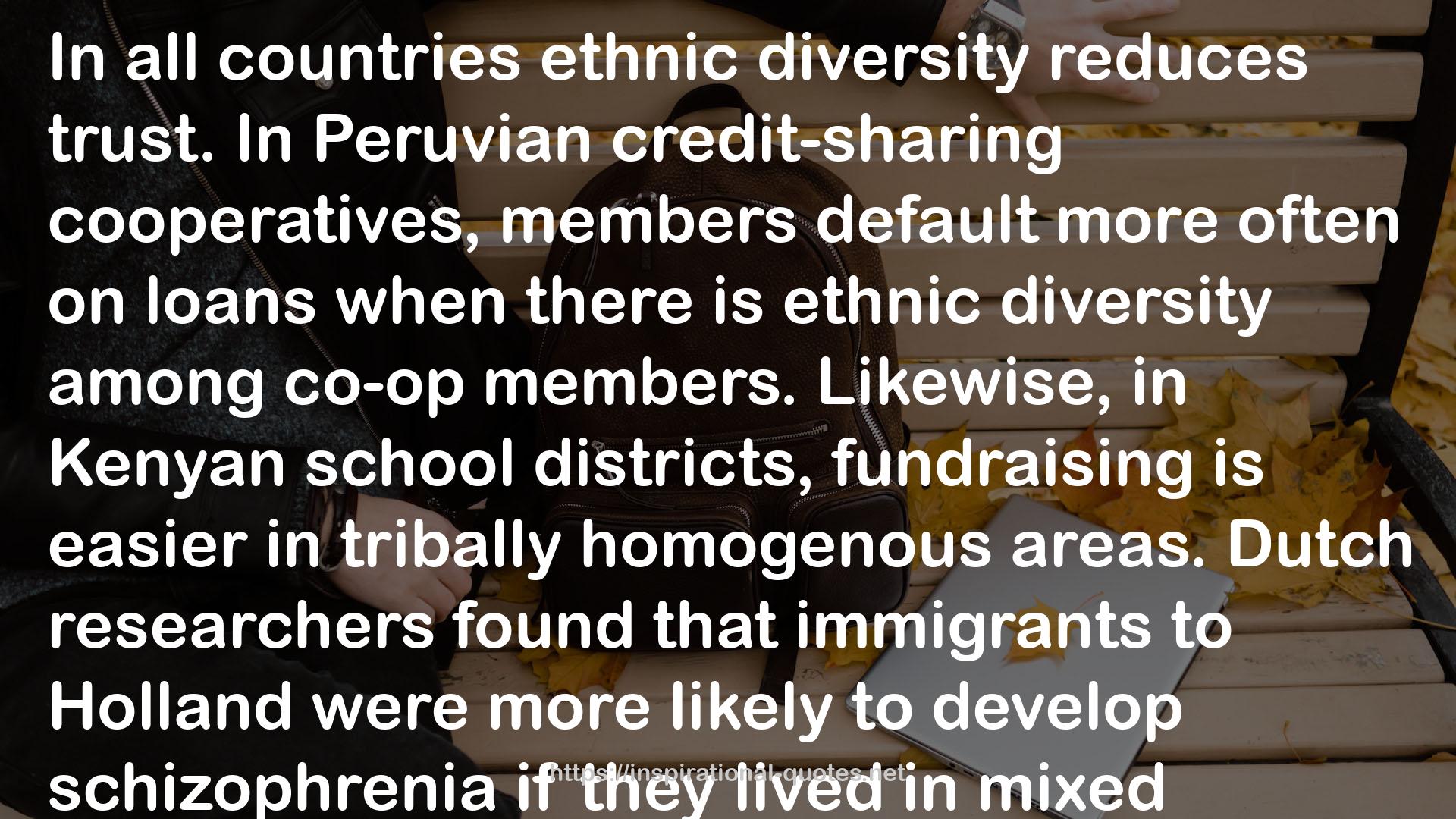" In all countries ethnic diversity reduces trust. In Peruvian credit-sharing cooperatives, members default more often on loans when there is ethnic diversity among co-op members. Likewise, in Kenyan school districts, fundraising is easier in tribally homogenous areas.
Dutch researchers found that immigrants to Holland were more likely to develop schizophrenia if they lived in mixed neighborhoods with Dutch people than if they lived in purely immigrant areas. Surinamese and Turks had twice the chance of getting schizophrenia if they had to deal with Dutch neighbors; for Moroccans, the likelihood quadrupled.
Dora Costa of the Massachusetts Institute of Technology and Matthew Kahn of Tufts University analyzed 15 recent studies of the impact of diversity on social cohesion. They found that every study had “the same punch line: heterogeneity reduces civic engagement.”
James Poterba of MIT has found that public spending on education falls as the percentage of elderly people without children rises. He notes, however, that the effect “is particularly large when the elderly residents and the school-age population are from different racial groups.” This unwillingness of taxpayers to fund public projects if the beneficiaries are from a different group is so consistent it has its own name—“the Florida effect”—from the fact that old, white Floridians are reluctant to pay taxes or vote for bond issues to support schools attended by blacks and Hispanics. Maine, Vermont, and West Virginia are the most racially homogeneous states, and spend the highest proportion of gross state product on public education.
Most people believe charity begins with their own people. A study of begging in Moscow, for example, found that Russians are more likely to give money to fellow Russians than to Central Asians or others who do not look like them.
Researchers in Australia have found that immigrants from countries racially and culturally similar to Australia—Britain, the United States, New Zealand, and South Africa—fit in and become involved in volunteer work at the same level as native-born Australians. Immigrants from non white countries volunteer at just over half that rate. At the same time, the more racially diverse the neighborhood in which immigrants live, the less likely native Australians themselves are to do volunteer work. Sydney has the most diversity of any Australian city—and also the lowest level of volunteerism. People want their efforts to benefit people like themselves.
It has long been theorized that welfare programs are more generous in Europe because European countries have traditionally been more homogeneous than the United States, and that people are less resistant to paying for welfare if the beneficiaries are of the same race. Alberto Alesina and Edward Glaeser have used statistical regression techniques to conclude that about half the difference in welfare levels is explained by greater American diversity, and the other half by weaker leftist political parties.
Americans are not stingy—they give more to charity than Europeans do—but they prefer to give to specific groups. Many Jews and blacks give largely or even exclusively to ethnic charities. There are no specifically white charities, but much church giving is essentially ethnic. Church congregations are usually homogeneous, which means that offerings for aid within the congregation stay within the ethnic group. "
― Jared Taylor , White Identity: Racial Consciousness in the 21st Century
